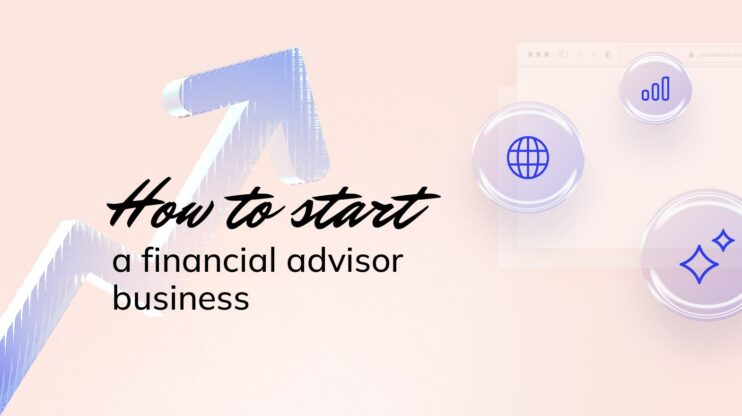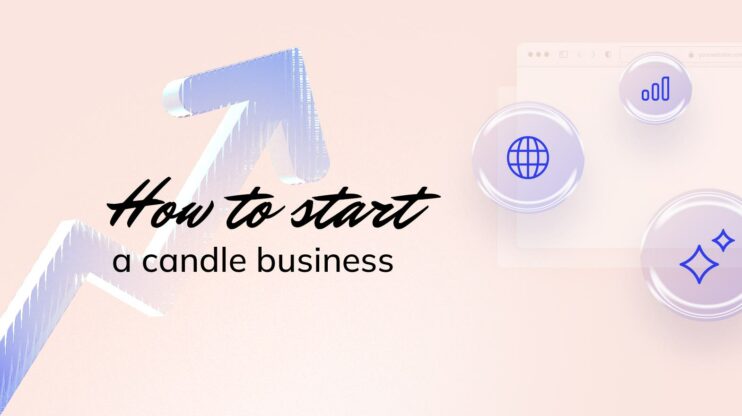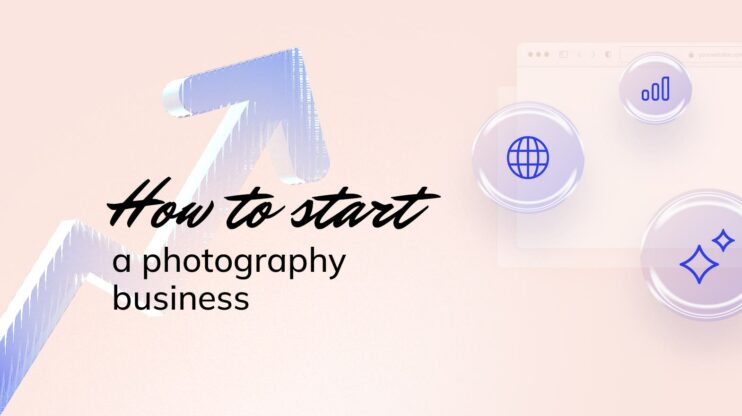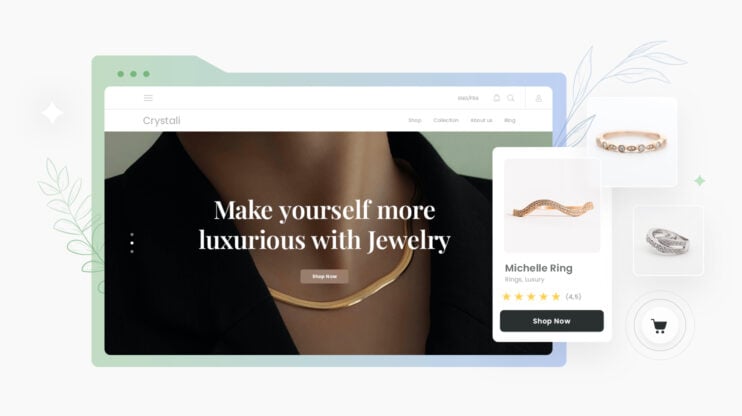Launching a hat business demands careful planning to achieve success. This article guides you through essential steps, from market research and product design to sourcing materials and marketing strategies. Whether you’re crafting bespoke hats or launching a brand, you’ll find practical tips to turn your passion for headwear into a thriving enterprise.

FAQ
Is a hat business profitable?
Is there money in making hats?
What is the profit margin on hats?
How much does it cost to get a hat?

Looking to sell online?
Create your custom online store in minutes with 10Web AI Ecommerce Website Builder and take your business online.
Stage 1: Before starting your hat business
When starting to work on your hat business, it is important to do some research to analyze what are the main points you will need to focus on, so understanding the hat market by conducting market research is essential. Additionally, you should focus on identifying your target market, researching potential competitors, and selecting the type of customers you want to target.
Step 1: Conducting market research
Conducting thorough market research is the foundation of any successful hat business. First, you need to collect data on the current state of the hat market. Look at sales figures, consumer behavior, and seasonal trends. Use market analysis tools such as surveys, focus groups, and online analytics. This research will help you understand what types of hats are in demand, which demographics are purchasing them, and what factors influence their buying decisions.
Analyzing historical data will also help you predict future trends. Knowing which times of the year the hat sales peak can help you plan your inventory and marketing strategies. Reliable sources of data include industry reports, fashion magazines, and market research firms.
Step 2: Identifying your target audience
Knowing your target market is key to your business’s success. Define the demographics you want to reach, such as age, gender, lifestyle, and location. For example, a line of high-end fashion hats will cater to different customers than a collection of sports hats. You need to ask questions like: Who is my ideal customer? What are their preferences and shopping habits?
You can segment your target market further by looking at specific interests or needs. For instance, do they prefer eco-friendly materials or luxury fabrics? The more you know about your audience, the better you can tailor your products and marketing efforts to meet their needs.
Step 3: Analyzing competition and trends
Researching competition within the hat market helps you understand what other businesses are doing and how you can differentiate your brand. Identify key competitors and analyze their strengths and weaknesses. Look at their product offerings, pricing, marketing strategies, and customer reviews.
Staying on top of trends is equally important. The fashion industry is always evolving, so it’s vital to keep up with new styles, colors, and materials. Follow fashion shows, read industry reports, and keep an eye on influencer and social media trends. By doing so, you can spot opportunities to innovate and stand out in the market.
Step 4: Selecting your ideal market
Choosing an ideal market allows you to focus your efforts and resources on a specific segment of the market. This could be anything from vintage hats to sporty caps or bridal millinery. Identifying your niche involves looking at market gaps—areas where customer needs are not fully met by existing products.
Think about what makes your hats unique. Is it the design, materials used, or a particular craftsmanship technique? Find a niche that aligns with your passion and expertise. This way, you can position your brand to attract a loyal and dedicated customer base.
Step 5: Setting up your business structure
Before starting your hat business, you need to determine your business structure and fulfill the necessary legal requirements. This step is crucial to ensure smooth operations and compliance with regulations.
Choosing the right business entity
Selecting the appropriate business entity affects your taxes, legal responsibilities, and how you run your business. The main types are sole proprietorship, partnership, and corporation.
- Sole proprietorship is simple to set up and gives you complete control. However, your personal assets are at risk if the business incurs debts.
- Partnership involves two or more people sharing profits and responsibilities. It’s essential to draft a partnership agreement detailing each partner’s roles and profit-sharing terms.
- Corporation provides liability protection but is more complex and expensive to set up. It can be a good choice if you plan to scale up your hat business or seek investors.
Registering your business and acquiring licenses
After choosing your business entity, you need to register your business name and get the necessary licenses and permits.
- Register your business name with your state or county. Depending on your business structure, this may involve filing a Doing Business As (DBA) form.
- Obtain an EIN (Employer Identification Number) from the IRS if you plan to hire employees or form a corporation or partnership.
- Apply for a business license from your local government. Check with your city or county for specific requirements.
- Secure any special permits needed for selling hats in your area. This might include sales tax permits or health department permits if you handle materials requiring special care.
Proper registration and licenses ensure you operate legally and can help build trust with customers.
Step 6: Calculating costs and pricing strategies
When starting a hat business, it’s important to estimate your startup and operational costs and develop a smart pricing strategy. These elements are key for running a profitable business and making sure your sales cover your expenses.
Estimating startup and operational costs
First, you’ll need to calculate startup costs. These include expenses like:
- Materials and supplies: Fabric, thread, and other hat-making materials.
- Equipment: Sewing machines, hat forms, and other tools.
- Marketing: Website development, branding, and advertising.
- Legal fees: Permits, licenses, and trademarks.
Include these startup costs in a table for clarity:
| Expense | Estimated Cost ($) |
| Materials and supplies | 1,000 |
| Equipment | 2,500 |
| Marketing | 1,500 |
| Legal fees | 300 |
| Total | 5,300 |
Don’t forget operational costs. These recurring expenses include:
- Rent or lease: If you have a physical store.
- Utilities: Electricity, water, internet.
- Inventory: Restocking materials.
- Shipping fees: Costs to send your hats to customers.
- Employee wages: If you hire help.
List operational costs to track them easily:
| Expense | Monthly Cost ($) |
| Rent | 1000 |
| Utilities | 200 |
| Inventory | 500 |
| Shipping fees | 300 |
| Employee wages | 1500 |
| Total | 3,500 |
Developing a pricing strategy
Setting the right price for your hats is essential. Consider these steps:
- Calculate your costs: Add up material, production, and operational expenses.
- Decide on a profit margin: A common profit margin is between 30-50%.
- Research market pricing: Look at competitors’ prices to remain competitive.
- Consider perceived value: Unique designs or high-quality materials can justify higher prices.
Here’s an example:
- If your total cost to produce and sell a hat is $15, aim for a profit margin:
- With a 50% margin, you would charge $30.
- Compare this price to competitors.
- Adjust based on the market and the unique aspects of your hats.
With this detailed approach, you’ll be well on your way to establishing a successful hat business with a sound pricing strategy.

Looking to sell online?
Create your custom online store in minutes with 10Web AI Ecommerce Website Builder and take your business online.
Stage 2: Starting your hat business
The process of starting a business requires entrepreneurs to develop a business plan to ensure that everything runs smoothly. Additionally, it is important to choose the right brand name and logo, establish an online presence for online shoppers, choose suppliers, and assign the best prices to make your business profitable.
Step 1: Developing your hat business plan
Creating a solid business plan is crucial for starting a hat business. Your plan should map out your steps to profitability, outline your business model, describe production processes, and forecast your finances.
Crafting an executive summary
The executive summary gives a brief snapshot of your hat business. Highlight your business goals, target market, and unique selling points. Explain why your business idea stands out in the market and how it will succeed.
- Business goals: State your short-term and long-term objectives.
- Target market: Describe who your customers are.
- Unique selling points: Emphasize what makes your hats different.
A clear, concise summary will attract potential investors and guide your overall strategy.
Defining your business model
Your business model outlines how you will generate revenue. Choose whether you’ll focus on online sales, physical stores, or both. Decide on the types of hats you will offer and your pricing strategy.
- Sales channels: Specify if you will sell online, in-store, or via both.
- Hat types: Decide on the styles of hats (e.g., baseball caps, fedoras).
- Pricing strategy: Determine the price range for your hats.
This section ensures you have a clear plan for reaching your customers and making sales.
Planning production and manufacturing
How and where you produce your hats is key to your business. Decide if you will manufacture your hats yourself or hire a production company. Research materials, production costs, and timelines.
- In-house vs. outsourcing: Determine if you will produce in-house or outsource.
- Materials: Choose the fabrics and materials for your hats.
- Costs and timelines: Estimate the cost of production and how long it will take.
Proper planning here ensures you can meet demand without exceeding your budget.
Outlining financial projections
Financial projections help you understand the costs and predict profits. List startup costs, ongoing expenses, and revenue forecasts. Include a timeline showing when you expect to break even and start making a profit.
- Startup costs: Include machinery, raw materials, and marketing.
- Ongoing expenses: List rent, utilities, salaries, and inventory.
- Revenue forecasts: Project your sales for the first few years.
Having detailed financial projections will help you secure funding and keep your business on track.
Step 2: Building your hat brand
Creating a successful hat brand starts with a strong name, a unique logo, and a clear identity. Your products should reflect your brand’s style and values, attracting loyal customers.
Choosing a business name and logo
Your business name is the first thing customers will notice. It should be memorable and reflect your brand’s style. Avoid names that are too complicated or similar to existing brands. Make a list of potential names and check their availability as domain names. Additionally, you can benefit from using AI Name Generators to find a unique name for your hat business, such as the 10Web AI Business Name Generator that allows you to generate catchy and memorable names for free.

A well-designed logo helps establish your brand. It’s worth investing in a professional designer to create a logo that stands out. Think about colors and fonts that reflect your brand’s values, whether it’s bold and modern or classic and elegant. Keep your logo simple yet distinctive.
Developing a brand identity
Your brand identity includes your logo, colors, and overall style. It’s how customers perceive your brand. Define what sets your brand apart. Is it the quality of materials, the unique designs, or your strong sustainable values?
Create brand guidelines that include your voice and tone. Are you formal and professional, or casual and friendly? Consistency in your message builds trust. Having a clear identity helps customers connect with your brand on a personal level.
Creating your product offerings
Choose the types of hats you’ll offer. Will you sell caps, beanies, or fedoras? Think about your target audience and what styles will appeal to them. Offering a variety of designs can attract different customer groups.
Quality is crucial. Select materials that reflect your brand’s standards. Pay attention to design details, such as stitching and fit. Your product offerings should be unique to your brand. Stand out by offering customizable options, special collections, or collaborations with designers.
Provide detailed descriptions and high-quality images for your products. This helps customers understand what they’re buying and can improve their shopping experience. Keep your inventory updated with the latest trends to keep your customers coming back for more.
Step 3: Crafting your hat designs
Creating unique and attractive hat designs is crucial for your hat business. Focus on popular styles and offer customization options to stand out in the market.
Exploring hat styles and fashion
When designing hats, keep up-to-date with current fashion trends. Research popular styles like baseball caps, beanies, and fedoras. Consider your target audience’s preferences.
Utilize different materials such as cotton, wool, and synthetic fabrics. These affect the hat’s functionality and appeal. Collaborate with designers to create unique and fashionable designs.
Keep an eye on what other brands are doing, and look for gaps in the market you can fill. This helps you create distinctive products that attract customers.
Integrating customization and personalization
Offer customization options to attract a broader audience. Custom hats can include name monograms, initials, or unique graphics.
Use various techniques to customize hats, like embroidery, screen printing, and heat transfer. Each method has its own advantages. For example, embroidery is durable and looks premium, while heat transfer is great for full-color designs.
Allow customers to choose from a range of colors, sizes, and styles. This personal touch can set your business apart and increase customer loyalty.
Step 4: Sourcing materials and manufacturers
To start a successful hat business, you need to find high-quality suppliers and reliable manufacturers. Additionally, having the right production equipment is essential. Let’s dive into these aspects in detail.
Finding quality suppliers
You’ll need to source the best materials to ensure your hats are durable and high-quality. Look for suppliers offering a variety of fabrics such as wool, cotton, or felt. Compare prices, but also check the durability and sustainability of the materials.
Create a list of potential suppliers and reach out to them for samples. This allows you to test the materials firsthand, ensuring they meet your standards. Also, maintaining a good relationship with your suppliers can lead to better deals and more reliable service.
Partnering with manufacturers
Once you have your materials, you’ll need skilled manufacturers to produce your hats. Look for manufacturers with a good track record and experience in making hats. Ask for samples of their previous work to gauge their quality.
It’s crucial to establish clear communication with your manufacturers. Discuss your designs, expected timelines, and quality standards. Regular updates and check-ins help ensure that the production process goes smoothly and meets your expectations.
Exploring production equipment
Besides sourcing materials and manufacturers, acquiring the right production equipment is key. Depending on your production scale, you might need sewing machines, fabric cutters, and hat blocks. Each piece of equipment serves a specific purpose in hat-making.
Invest in high-quality and durable equipment to avoid frequent replacements and repairs. It’s also beneficial to train your staff on how to properly use and maintain the equipment. This not only increases efficiency but also ensures a high standard of craftsmanship in your hats.
If you decide to start with a smaller setup, consider second-hand equipment in good condition to keep initial costs down.
Step 5: Creating an online store and presence
Creating an online store and building a strong online presence is crucial when starting a hat business. Key points include choosing the right platform for your business and building an engaging website that attracts customers.
Choosing a platform for your online business
Choosing the right platform is essential. Popular options include Amazon and Etsy.
Both Amazon and Etsy are a good choice if you want to focus on handmade or vintage hats. They provide a user-friendly interface and access to a large customer base looking for unique items.
Evaluate each platform based on your specific needs, budget, and the type of hats you are selling.
Building an engaging website
Your website is the hub of your online presence. Here are critical steps to make it engaging:
- Design: Choose a clean, professional design with easy navigation. Use high-quality images of your hats from different angles.
- Content: Write compelling product descriptions that highlight the materials, craftsmanship, and style of each hat. Include an About Us page to tell your brand story.
- SEO: Optimize your website for search engines so customers can find you. Use keywords related to your hat business in your content, titles, and meta descriptions.
- Mobile-friendly: Ensure your website is mobile-friendly. Many customers shop from their phones, and a mobile-optimized site enhances their experience.
- Contact options: Provide easy ways for customers to contact you, such as a contact form, email address, or social media links.
- Payment options: Offer various payment options to make it convenient for customers to purchase your hats.
However, to make the website creation process easier and quicker, using an AI generator can be the best option. One of the most innovative and recommended platforms is the 10Web AI Website Builder, that provides you with all of the benefits mentioned above. Additionally, when you use 10Web for your hat business, you also have the option of choosing the AI Ecommerce Website Builder that 10Web provides that will make your business – such as payments, inventory, sales, etc. – from a single platform.
Steps to generate a website with 10Web
Here are the steps you can follow to create you hat business’s website using 10Web:
- Go to 10Web.io or you can go directly to this link that generates a website focused on a specific industry.

- Click on Generate Your Website.
- Choose the option that generates a website using AI, and click Proceed.

- Select your business type – hat shop or Ecom hat shop.

- Write your store’s name and a short description. Enhance the description by using the Enhance with AI option.

- Add the Products and Categories you want your website to have and click Generate.

Once you have completed these steps, wait for a couple of minutes for the AI to generate your ideal website.
Additionally, you can also leverage social media platforms like Instagram and Facebook to drive traffic to your website. Share updates, new product launches, and engage with your audience to build a loyal customer base.

Looking to sell online?
Create your custom online store in minutes with 10Web AI Ecommerce Website Builder and take your business online.
Stage 3: Creating a marketing campaign and managing operations
Once you make your business public, you will need to market your business to reach the audience you want to target. For this, you will need to come up with a marketing plan and manage your operations in an effective manner to generate profits and make your hat business successful.
Step 1: Marketing your hat business
To make your hat business successful, you need a strong marketing plan. This includes developing a marketing strategy, leveraging social media and influencers, and participating in fashion and trade shows.
Developing a marketing strategy
Start by identifying your target audience. Are you making hats for young adults, kids, or professionals? Knowing who your customers are helps tailor your marketing efforts. Then, analyze your competitors. Look at their pricing, promotion tactics, and unique selling points.
Once you understand your market, create a brand that stands out. Choose a name, logo, and color scheme that reflects your hat business. Make sure your brand sends a clear message to your potential customers.
Next, focus on different marketing channels. You can use social media, email marketing, and online advertising to reach your audience. It’s crucial to have a website where customers can learn about your hats and make purchases. Invest in search engine optimization (SEO) to drive traffic to your site.
Leveraging social media and influencers
Social media is a powerful tool to promote your hat business. Platforms like Instagram, Facebook, and Pinterest allow you to showcase your products visually. Post high-quality photos and videos of your hats. Use engaging captions and hashtags to reach more people.
Collaborate with influencers in the fashion industry. They can help you reach a larger audience and build credibility. Choose influencers whose followers match your target audience. Offer them free products or a commission for promoting your hats.
Run promotions and giveaways on social media to generate buzz. Encourage your followers to share your content and tag their friends. This increases your visibility and attracts potential customers.
Participating in fashion and trade shows
Attending fashion and trade shows is essential for growing your hat business. These events allow you to showcase your products to industry professionals and potential buyers. Research upcoming shows and select those that align with your brand.
Create an eye-catching booth to attract visitors. Display your best-selling hats and new designs. Provide brochures or business cards with your contact information and website. Engage with attendees and answer their questions.
Networking at these events is crucial. Connect with other vendors, buyers, and influencers. These relationships can lead to valuable opportunities and partnerships. Take note of any feedback you receive on your products and use it to make improvements.
Participating in these events helps establish your brand in the fashion industry and boosts your sales.
Step 2: Managing operations and customer service
Effective operations management and strong customer service are critical to running a successful hat business. Key areas to focus on include handling orders and optimizing distribution, as well as ensuring a great experience for every customer.
Handling orders and distribution channels
Managing the flow of orders and distribution efficiently helps keep your business running smoothly.
- Order management: Use inventory management software to track stock levels and ensure quick restocking. This keeps popular items available and helps avoid overstock situations.
- Distribution channels: Explore multiple distribution channels such as selling online through your own website, partnering with ecommerce platforms, or selling in physical stores. Having a mix of channels increases your reach and customer base.
- Logistics: Choose reliable shipping partners. Timely and accurate order fulfillment builds trust and increases customer satisfaction. Consider offering various shipping options based on delivery times and costs.
- Record keeping: Maintain detailed records of all transactions, including sales, returns, and shipments. This not only helps in tracking performance but also in managing finances and inventory.
Ensuring excellent customer experience
Providing outstanding customer service will set your hat business apart and encourage repeat customers.
- Customer interaction: Train your staff to greet and assist customers warmly, both in-person and online. Offer personalized advice on hat selection, fit, and style to enhance the shopping experience.
- Feedback and reviews: Encourage customers to leave reviews and provide feedback. This information is invaluable for improving your products and services. Respond to feedback promptly and professionally, addressing any concerns or issues.
- After-sales service: Implement a clear and fair returns and exchange policy. Ensure that the process is easy and hassle-free for customers. Follow up with customers post-purchase to check their satisfaction and address any further needs.
- Promotions and loyalty programs: Run special promotions and offer loyalty programs. Rewarding repeat customers with discounts or special offers can help build long-term relationships and increase sales.
Maintaining finances and growth
To keep your hat business profitable and ready for future growth, you’ll need to manage finances effectively and plan for expansion. Focus on tracking sales, planning for scale, and finding funding if necessary.
Tracking sales and revenue
Keeping track of your sales and revenue is essential for a profitable business. Use software like QuickBooks or Xero for accurate tracking.
- Record every sale, both online and in physical stores.
- Monitor which types of hats are selling best.
- Compare monthly, quarterly, and yearly revenue to identify trends.
Accurate records will help you make informed decisions and spot issues early. Set aside time weekly or monthly to review your financials and adjust plans as necessary.
Planning for scale and expansion
When your business grows, you’ll need to scale operations. Start by analyzing your current capacity and demand.
- Identify what resources (materials, employees, warehouse space) you need to increase production.
- Look at your supply chain and logistics to ensure they can handle more substantial volumes.
- Consider automation and new technologies that could streamline processes.
Planning also includes marketing strategies to reach new customers. Set measurable growth targets, like increasing sales by 20% in the next year, and outline steps to meet these goals.
Seeking funding and investors
If you need extra money to grow, consider finding funding or investors. There are various options available:
- Bank loans: Traditional loans from banks, requiring a solid business plan and credit history.
- Angel investors: Individuals who invest in startups in exchange for equity.
- Venture capitalists: Firms that provide large sums for big growth potential, often needing a higher return.
Prepare a detailed plan showcasing your business’s potential for profitability. Highlight key points, such as sales figures, growth projections, and market opportunities. This will make your business more appealing to potential investors.
With careful tracking, thorough planning, and the right funding, you’ll be well on your way to maintaining a successful and growing hat business.
Conclusion
Launching a hat business is an exciting venture that combines artistry and entrepreneurship. By following the steps outlined—conducting thorough market research, designing unique products, sourcing quality materials, and implementing effective marketing strategies—you can establish a successful brand. With dedication and creativity, your passion for hats can transform into a profitable and fulfilling business.


















